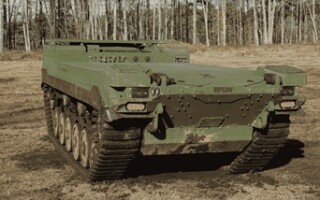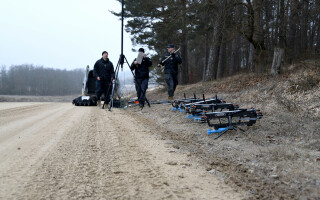Space-tech reading list
StoryJune 19, 2024

One of the reasons I chose a career in aerospace and defense media is my love of space technology. Our June issue is annually one where we run much of our space content, from radiation-hardened electronics trends to satellite technology – with even more coverage of artificial intelligence (AI).
Our content this month dives into how rad-hard requirements are evolving to deal with military threats in space and how the defense world is leveraging commercial solutions for space platforms.
But don’t let your reading stop here: I love diving into articles about space technology, from the search for extraterrestrial life to histories of the space program and, of course, science fiction.
One intriguing example: Dyson spheres. A recent article, “’Dyson spheres’ were theorized as a way to detect alien life. Scientists say they’ve found potential evidence,” by Jacopo Prisco on CNN.com talks about how the radiation emitted by these theoretical spheres could be used to determine the existence of other intelligent life in the galaxy.
Prisco tells us the sphere gets its name from British American physicist Freeman Dyson, who “theorized it would be a shell made up of mirrors or solar panels that completely surrounds a star – harnessing all the energy it produces.”
The CNN article quotes Dyson’s 1960 paper explaining the concept: “’One should expect that, within a few thousand years of its entering the stage of industrial development, any intelligent species should be found occupying an artificial biosphere which completely surrounds its parent star.’” Read the article at https://www.cnn.com/2024/06/13/science/dyson-spheres-alien-life-evidence-scn/index.html.
The Dyson sphere concept also reminds me of the science-fiction trilogy “Ringworld,” by Larry Niven. I read the books again recently for the first time since I was a teenager. The story is set centuries in the earth’s future and details how humanity comes across a world that is one huge, rotating ring – nearly 200 million miles in diameter – and built by intelligent life that appears to be long gone. Published in 1970, it still mesmerizes today.
Back to Dyson, or more specifically his son, historian George Dyson, who is quoted in the CNN piece, saying of his Dad: “’Taking advantage of a short attention span and an aversion to bureaucracy, he contributed to five fields of mathematics and eleven fields of physics, as well as to theoretical biology, engineering, operations research, literature, and public affairs. Many of his ideas were controversial, with one of his guiding principles being that ‘It is better to be wrong than to be vague.’”
The younger Dyson is also the author of the book “Project Orion: The True Story of the Atomic Spaceship.” I picked up a copy years ago (Figure 1) and became a fan of George and his father. In the book, George Dyson tells the story of how in the 1950s the U.S. pursued using atomic bombs as the propellant for space travel. The Project Orion team was led by Dyson’s father, Freeman, and Theodore B. Taylor, an American bomb designer. Technically it could have worked, but politics got in the way.

[Figure 1 ǀ My copy of “Project Orion.”]
You can read Freeman Dyson's 2020 obituary in Physics World: www.physicsworld.com/a/freeman-dyson-unorthodox-to-the-end/.
To learn about the heroes who risked all to fly the first U.S. space missions, pick up the book “The Right Stuff,” about the original Mercury 7 astronauts – let’s remember their names: John Glenn, Alan Shepard, Scott Carpenter, Gordon Cooper, Gus Grissom, Wally Schirra, and Deke Slayton – authored by Tom Wolfe. For that matter, read anything by Tom Wolfe, fiction or nonfiction. There was never anyone like him. Yes, they made a movie of the book, but if you’d rather watch the movie than read the book, this particular column might not be for you.
And why explore these theories and technologies? Why go to the moon or Mars? I’ll let Freeman answer that, in a citation from his son’s book: “We shall know what we go to Mars for, only after we get there,” the elder Dyson wrote in May 1958. “You might as well ask Columbus why he wasted his time discovering America when he could have been improving the methods of Spanish sheep-farming. It is lucky that the U.S. government like Queen Isabella is willing to pay for the ships.”






